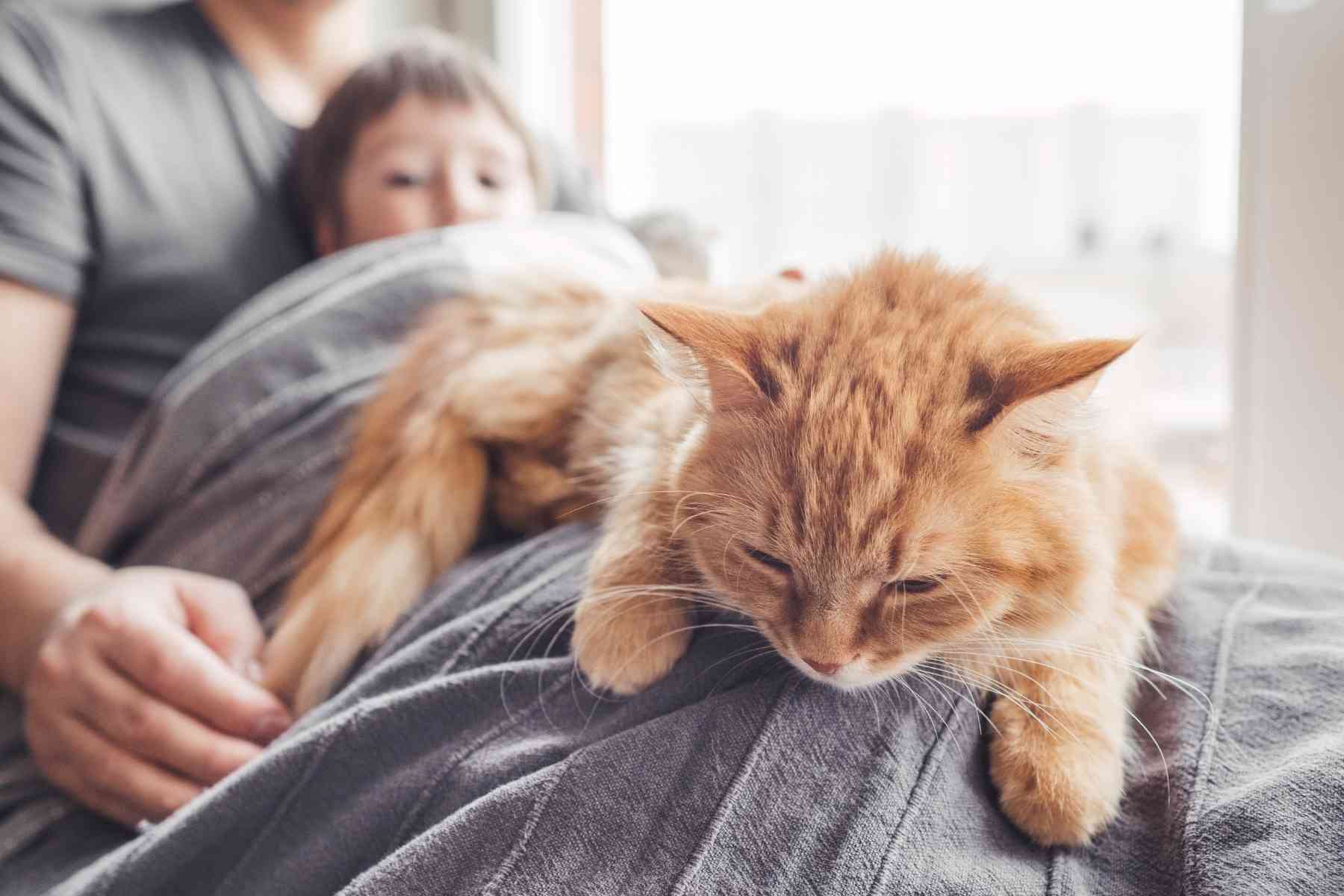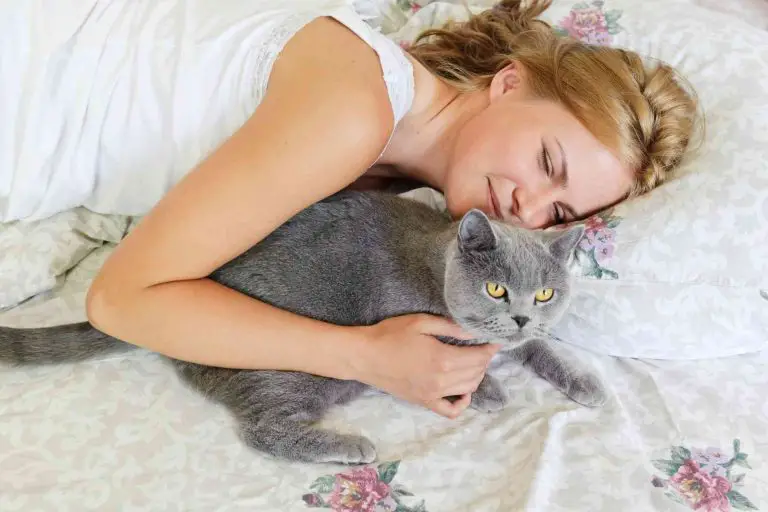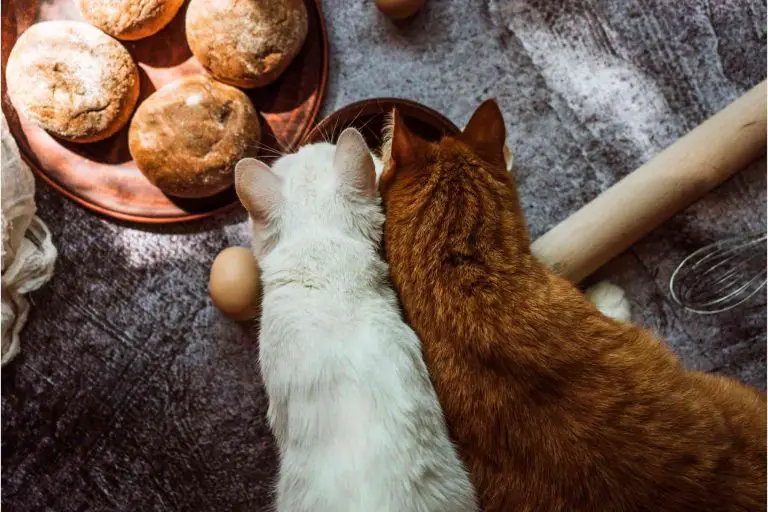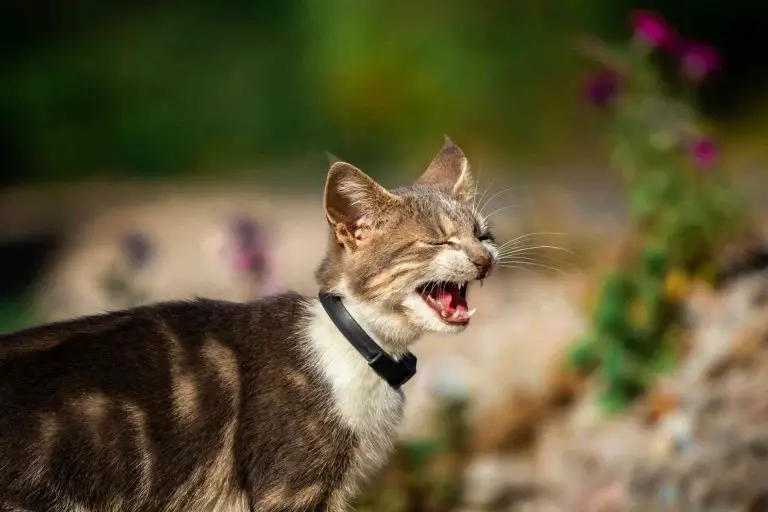Why Does My Cat Lick My Blanket and Purr?

Your cat is suckling – imitating how it used to nurse (breastfeed) on its mother’s milk. Often, the cat chooses a blanket with a woolly or furry texture, similar to a mother cat’s fur. It’s a common behavior when cats are taken early from their mothers or were rescue kittens.
Many cats lick and suck on blankets or clothing, and it’s generally harmless – but you do need to check on the cat’s stress levels, because suckling can also indicate a stressed cat. Find out how to tell the difference.
What’s My Cat Doing when It Licks My Blanket and Purrs?
Licking and sucking on blankets (“suckling”) is common cat behavior, particularly if, as a kitten, they were separated from their mother before 13 weeks of age.
Purring usually occurs with licking and sucking. If they were separated from their mother early, they did not have a chance to grow out of the suckling behavior naturally.
As they mature, kittens will gradually replace nursing with eating food, and replace the comfort of nursing with other behaviors such as self-grooming or grooming their brothers and sisters.
Why Do Cats Who Were Separated early from Their Mothers Continue to Suckle?
Kittens continue to “suckle” from their mother for some time after they are weaned, even when milk is no longer present.
This suckling seems to be an essential part of developing the ability to self-soothe and feel regulated in other ways as an adult cat.
If that process was interrupted, your cat might still have suckling hard-wired into their brains as a vital need. It may have remained the primary way they self-soothe.
Being separated from the mother too early occurs very commonly in rescue kittens.
Why Is My Cat Kneading with Their Paws when They Lick My Blanket?
Kneading with paws is a trigger action done by kittens on the mother cat to stimulate the let-down reflex, which releases milk.
Kneading their paws is all part of re-creating that kittenhood experience of suckling, which is soothing to your cat.
Can Cats Suckle as Adults Even if They Weren’t Taken from Their Mothers?
Yes, some cats never grow out of the suckling behavior.
It may be more common in cats who are more highly strung.
It is more common in the Oriental breeds of cats, including the Siamese, Burmese, and Tonkinese breeds.
These are pretty well-known as more nervous breeds, which may feel more need for soothing behavior.
Will Cats Suckle on Other Things as Well as Blankets?
Cats can try suckling on a wide variety of things: not only blankets, but clothing, towels, furnishings, toys, balls of wool, or even on their humans’ fingers, earlobes, or the tip of their nose.
Does Licking My Blanket and Purring Mean My Cat Is Happy?
If your cat is suckling, it means they likely view you and the home as safe.
Nursing is only done by mother cats and kittens when they are in a safe place.
However, it is important to check. According to cat behaviorist Pam Layton-Bennett, licking or sucking on a blanket can indicate happiness, or it can indicate stress.
Does Licking My Blanket and Purring Mean My Cat Is Stressed?
It depends on how often the behavior is occurring and how intense it is.
If the cat suckles to a moderate extent, shows no other signs of stress, is well integrated with the family and neighborhood, and is enjoying life, it would be seen as normal.
However, if the suckling starts when it hasn’t occurred before, is occurring for many hours a day in a repetitive way, or seems particularly intense or obsessive, the cat may be stressed and trying to self-soothe.
Why Else Might My Cat Be Licking Things?
Cats can lick things for reasons other than suckling. Like dogs, cats find out a lot about the world by smelling and licking things.
Your blanket may just taste nice, particularly if a sweaty person has used it. Licking objects can also indicate diabetes in cats.
A nutritional deficiency called pica causes animals to lick or eat non-food items, trying to get the required nutrition. However, it’s probably suckling behavior if the cat is also purring while it licks.
Is It Okay for My Cat to Lick and Suck Blankets?
There may be a safety factor: if the cat is suckling hard or for a long time, it could be swallowing fibers. Check the blankets.
If you think it could be swallowing any significant amount of fibers, you should check the cat’s behavior with your vet.
How to Reduce a Cat’s Licking or Sucking of Blankets
Check what the cat could be stressed about
Prolonged or intense suckling in a cat should prompt you to check the cat’s environment and lifestyle for any possible stressors.
A new pet, a change in work times or household habits, a new neighborhood cat, or a family member moving in or moving out are all potential stressors that can affect a cat for up to two years.
Get a vet check and support
Lengthy or intense suckling can also indicate some medical problems in cats, so a vet check is warranted.
After screening out potential problems, the vet can assist you with reducing the cat’s stress level.
Enrich their environment
While you may read the cat’s home environment as calm and stable, it may actually be too routine.
Cats are intelligent and curious. It doesn’t matter if they are restricted to the home or go outdoors. All cats need stimulation. Do this by adding one or two new items for the cat to investigate and play with.
You can find a range of items around your house that cats will find interesting. Also, buy inexpensive toys from your local cat shelter, which will support the good work of the shelter.
You want to give your cat exciting things to do rather than suckling. Toys might include:
- Cardboard boxes. Use a variety of sizes and shapes. Cut doors and windows into bigger boxes for heads and paws to poke through – cats love this.
- Empty toilet rolls.
- Balls of scrunched-up foil (bigger than a cat could swallow.)
- Feather or string toys. Don’t leave the string toys out when you’re not home, because cats easily get them tangled around their necks.
- Small mouse or fish toys that feel like prey in a cat’s mouth.
- Battery-operated cat toys.
- A cat tower to climb. Move it around the house.
- A puzzle feeder.
Move the items into different rooms or swap them with new toys every few days.
Consider opening blinds and placing cat beds by windows, encouraging the cat to watch the world outside for mental stimulation.
Also, actively play with your cat, using the toys, preferably before feeding them.
Enrichment and play regulate a cat’s nervous system and help reduce its stress levels.
Try calming supports
After adding a plug-in pheromone dispenser, many cat owners report a significant positive change in their cat’s stress levels.
Pheromones are the scent that cats rub onto furniture, and your legs and hands, by rubbing the side of their face along these things.
The dispenser adds these to the home’s air and can bring down a cat’s stress level quickly and easily.
If these measures are ineffective, your vet can advise whether medication would be warranted.






